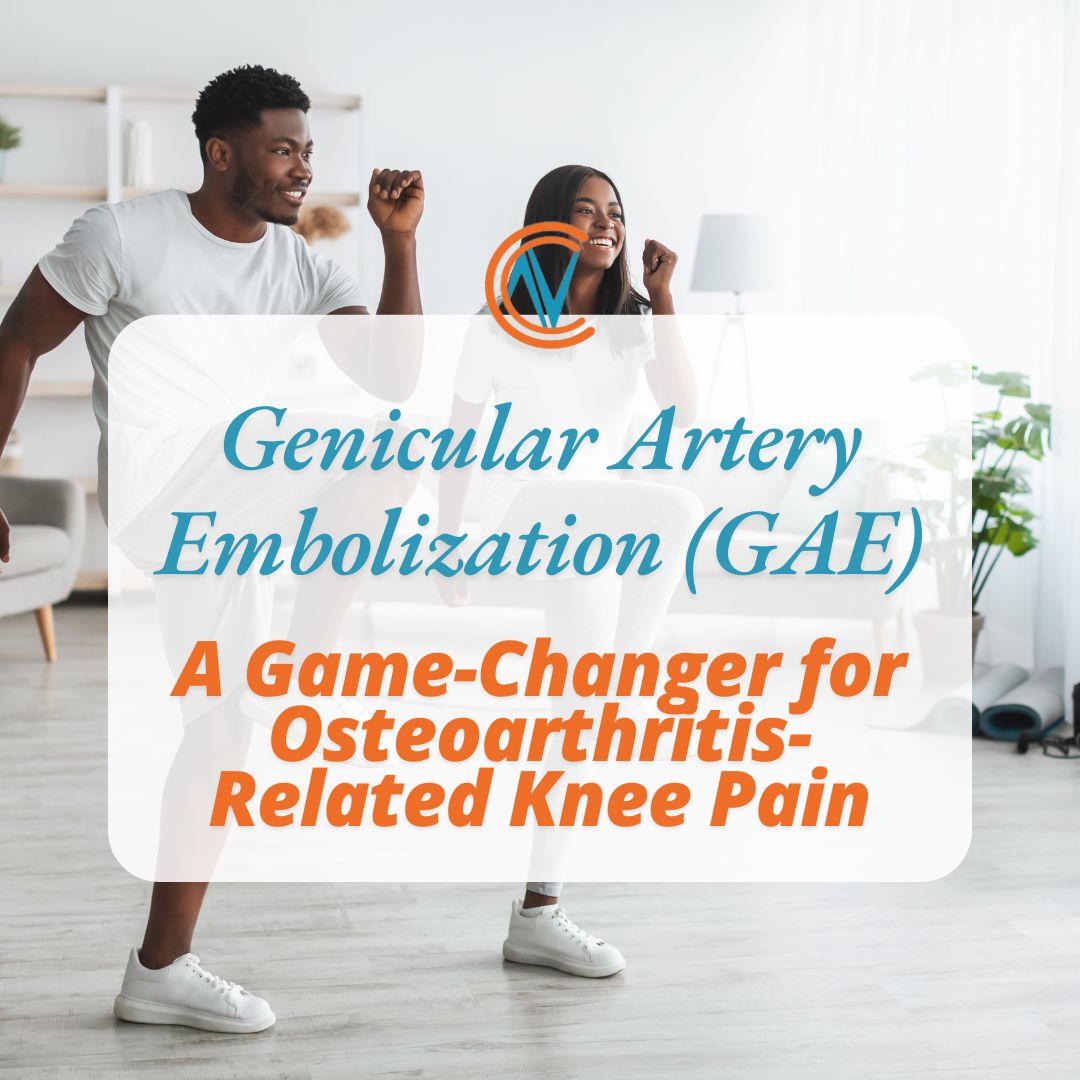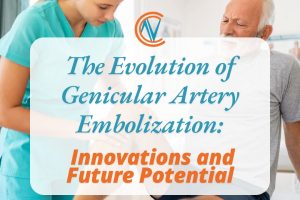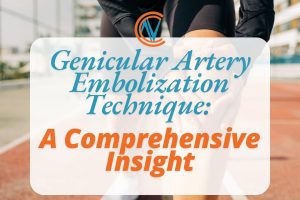
Genicular Artery Embolization (GAE): A Game-Changer for Osteoarthritis-Related Knee Pain
In the realm of minimally invasive treatments, Genicular Artery Embolization (GAE) has emerged as a groundbreaking technique for addressing chronic knee pain, particularly in patients with osteoarthritis. Unlike traditional surgical interventions or long-term reliance on medication, GAE targets the underlying cause of pain—inflammation and abnormal blood vessel growth—offering relief through a non-surgical approach. This article explores GAE’s unique advantages, its role in managing osteoarthritis symptoms, and the reasons behind its growing popularity.
The Osteoarthritis Epidemic: A Growing Concern
Osteoarthritis, characterized by the gradual breakdown of cartilage in the joints, affects millions worldwide. The knee joint is particularly vulnerable due to its weight-bearing function and complex structure. Symptoms such as swelling, stiffness, and chronic pain can severely impact mobility and quality of life. While treatments like physical therapy, anti-inflammatory medications, and cortisone injections provide temporary relief, they often fail to address the vascular component of osteoarthritis-related inflammation—a gap that GAE effectively fills.
How GAE Differs from Conventional Treatments
Traditional osteoarthritis treatments often focus on symptom management rather than targeting the root cause. Here’s how GAE stands out:
- Targeted Approach: GAE specifically blocks the blood vessels fueling inflammation, reducing pain and swelling.
- Minimally Invasive: Unlike knee replacement surgery, GAE involves no major incisions or lengthy recovery periods.
- Lasting Relief: Many patients experience significant pain reduction for months or even years post-procedure.
The Vascular Connection: Why GAE Works
Chronic inflammation in osteoarthritis leads to the formation of abnormal blood vessels around the knee joint. These vessels contribute to the inflammatory process by delivering excess nutrients and oxygen to the inflamed synovium. GAE uses embolic agents to occlude these vessels, effectively cutting off the supply line that perpetuates inflammation. This innovative approach not only alleviates pain but also reduces swelling and enhances joint function.
Ideal Candidates for GAE
GAE is most effective for patients who:
- Have moderate to severe knee pain due to osteoarthritis.
- Have not responded to conservative treatments such as medications or physical therapy.
- Are seeking alternatives to invasive surgical procedures.
- Are not yet ready or medically eligible for knee replacement surgery.
It’s important to note that GAE is less suitable for patients with advanced cartilage loss or significant structural joint damage.
The GAE Procedure: What Patients Can Expect
1. Pre-Procedure Evaluation
A comprehensive assessment is crucial to determine a patient’s eligibility for GAE. This includes:
- Imaging Studies: MRI or CT scans to identify areas of inflammation and abnormal vascular growth.
- Clinical Assessment: Evaluation of pain levels, range of motion, and overall joint health.
2. Procedure Overview
- Access Point: A small catheter is inserted through the femoral or radial artery.
- Targeting Vessels: Under fluoroscopic guidance, the catheter is navigated to the genicular arteries.
- Embolization: Tiny particles or microspheres are injected to block the targeted vessels.
- Completion: The procedure typically takes 1-2 hours, and patients are monitored briefly before discharge.
3. Recovery and Follow-Up
Patients often return to normal activities within a few days. Regular follow-ups assess the effectiveness of the treatment and address any residual symptoms.
Benefits Beyond Pain Relief
1. Improved Mobility Reduced pain and inflammation allow patients to regain mobility and engage in activities they may have avoided due to discomfort.
2. Enhanced Quality of Life Chronic pain can significantly impact mental health. GAE’s ability to provide sustained relief often leads to improved emotional well-being.
3. Delay in Surgical Interventions By addressing symptoms effectively, GAE can postpone or even eliminate the need for knee replacement surgery in some patients.
GAE’s Role in the Future of Osteoarthritis Treatment
As awareness of GAE grows, it’s becoming an integral part of the osteoarthritis treatment landscape. Its ability to bridge the gap between conservative therapies and invasive surgery positions it as a valuable option for many patients. Ongoing research and advancements in embolization materials are likely to further enhance its efficacy and safety.
Clinical Evidence Supporting GAE
Numerous studies underscore the effectiveness of GAE:
- Pain Reduction: Most patients report significant decreases in pain scores within weeks of the procedure.
- Functional Improvement: Enhanced range of motion and reduced stiffness are common outcomes.
- High Safety Profile: Complications are rare, and the minimally invasive nature of GAE minimizes risks associated with traditional surgical interventions.
Patient Stories: Real-Life Transformations
Case Study 1: Sarah, Age 58 Sarah struggled with knee pain for years, making it difficult to enjoy her favorite activities. After undergoing GAE, she reported a dramatic reduction in pain and was able to return to hiking within two months.
Case Study 2: Mark, Age 65 Mark’s severe osteoarthritis left him considering knee replacement surgery. GAE provided the relief he needed, delaying the need for invasive surgery and allowing him to maintain an active lifestyle.
Limitations and Considerations
While GAE offers numerous benefits, it’s not without limitations:
- Variable Efficacy: Some patients may experience less pain relief than others.
- Not a Cure: GAE addresses symptoms but does not halt the progression of osteoarthritis.
- Cost and Accessibility: While increasingly covered by insurance, GAE may not be available in all regions.
Genicular Artery Embolization is transforming the way we approach osteoarthritis-related knee pain. By targeting the vascular component of inflammation, it offers a unique solution for patients seeking effective, minimally invasive relief. As research continues and technology evolves, GAE is poised to become a cornerstone in the management of chronic knee pain, improving lives and expanding treatment options for countless individuals.
FAQs
-
Is GAE permanent?
- While GAE provides long-lasting relief, the effects may diminish over time in some patients. Repeat procedures are possible if symptoms recur.
-
How soon can I walk after GAE?
- Most patients can walk immediately after the procedure, with minimal discomfort.
-
Does GAE work for conditions other than osteoarthritis?
- Yes, GAE has shown promise in treating other inflammatory knee conditions, though osteoarthritis remains its primary indication.
-
What are the success rates of GAE?
- Success rates vary but are generally high, with many patients experiencing significant pain reduction and improved mobility.
-
Who performs GAE?
- GAE is performed by interventional radiologists trained in minimally invasive vascular procedures.


